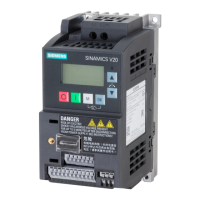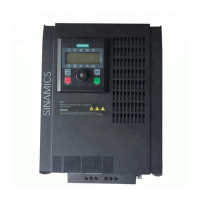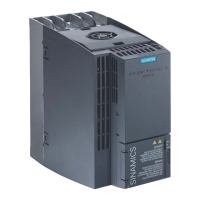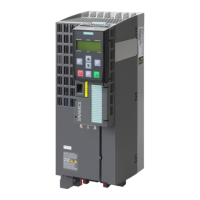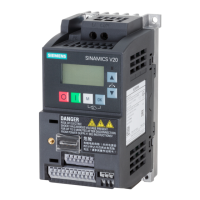3
02.98
1-55
Siemens AG 1998 All Rights reserved 6SN1197–0AA00 02.98 Edition
SIMODRIVE 611 (PJ)
The housings of the drive converter– and filter modules/line filters must be con-
nected through an extremely low–ohmic connection with the rear cabinet panel
so that high–frequency noise currents can be conducted. The rear cabinet pa-
nel must in turn be connected through a low–ohmic connection to the motors/
machine. The optimum solution is to mount the modules on a common bare
metal mounting panel so that there is an electrical connection through the lar-
gest possible surface. This mounting panel must then be connected to the mo-
tor/machine, also through the largest possible surface area so that a good elec-
trical connection is established. Painted cabinet panels as well as mounting rails
or other similar installation equipment with small mounting surfaces do not fulfill
this requirement.
The filter modules/line filter must be mounted close to the NE modules (not at
the cabinet input, but directly at the NE module); the screened cable connection
from the filter module/line filter to the NE module should be as short as possible.
The cables leading to the filter module/line filter must be routed separately.
When connecting filter modules in parallel (80 kW and 120 kW), it is adequate
to provide one fuse set, which protects both arms. For the rated fuse current,
refer to the Table 3-16.
Recommended configurations, refer to Figs. 3-12 and 3–8.
Power– and signal cables must always be separately routed away from each
other. In this case, the power cables from the converter module should be rou-
ted away towards the bottom and the encoder cable towards the top in order to
achieve the largest possible separation.
All of the control cables connected to the function terminals, e. g. terminals 663,
63, 48 etc. should be grouped together and routed away towards the top. Indivi-
dual cores which are associated with the same signal should be twisted. The
function cable assembly is best routed away from the encoder cable assembly.
There should be a minimum clearance of
200 mm between the cable assem-
blies (separate cable ducts).
All cables and conductors inside the cabinet should be routed as close as pos-
sible to the cabinet panels as loose random wiring can result in noise being cou-
pled–in (antenna effect). Fault sources in the vicinity should be avoided (contac-
tors, transformers etc.) and if required, a shield should be located between the
cable and noise source.
Cables and conductors should not be extended or lengthened through termi-
nals.
To protect the equipment from noise being coupled–in from external noise sour-
ces on the filter cable, screened cables must be used up to where the cable is
connected to the cabinet terminals.
Screened cables must be used for all of the motor– and line supply feeder ca-
bles. A covered metal cable duct which is connected through the largest possi-
ble surface area, can alternatively be used. In both cases, it should be ensured
that the shield/cable duct are connected through the largest possible surface
area to the appropriate components (converter module, motor).
Installation in the
cabinet
Cable routing
Power
cables
3.5.5 Installation and connection regulations

